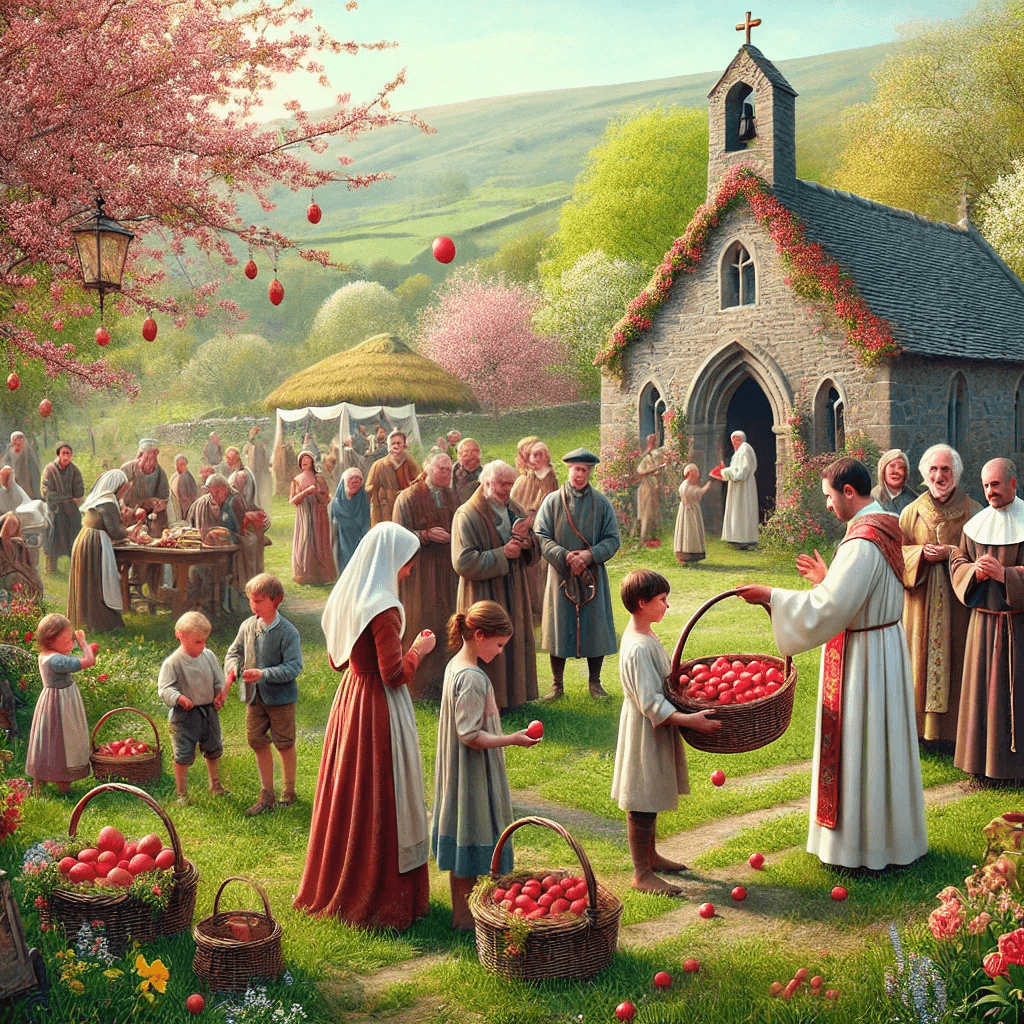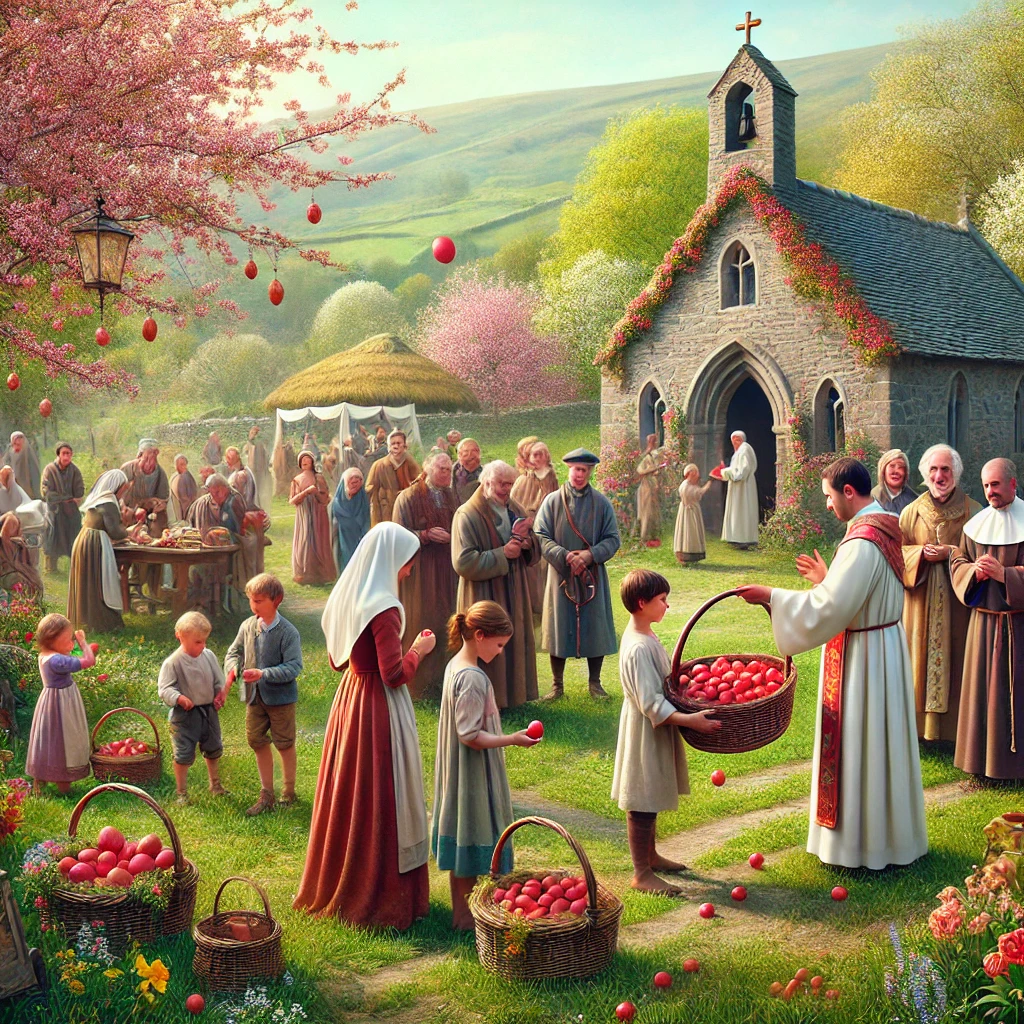The Christian Origins of Easter Eggs: History, Symbolism & Traditions

The Christian Origins of Easter Eggs: History, Symbolism & Traditions
Easter eggs are one of the most recognisable symbols of Easter Sunday, but their significance goes far beyond decoration or chocolate treats. Rooted in Christian tradition, Easter eggs symbolise the resurrection of Jesus Christ, reflecting themes of new life, renewal, and salvation.

While eggs were used as a symbol of rebirth in ancient cultures, their Christian meaning developed early in Church history, evolving into the Easter traditions we see today.
In this article, we explore the Christian origins of Easter eggs, their role in Easter celebrations, and how they became a lasting part of religious and cultural traditions.
⸻
Early Christian Symbolism: The Egg and Resurrection
The connection between eggs and Easter dates back to the early Church. Just as a chick breaks free from its shell, early Christians saw the egg as a metaphor for Christ’s resurrection, breaking free from the tomb.
The First Christian Easter Eggs: Red-Dyed Eggs
One of the earliest recorded Christian Easter traditions comes from Mesopotamian Christians, who dyed eggs red to represent the blood of Christ shed during the Crucifixion.
This practice spread to Eastern Orthodox Christianity, where red-dyed eggs are still an important part of Easter celebrations.
Greek Orthodox tradition: Red eggs are exchanged and used in the game tsougrisma, where players tap eggs together, symbolising Christ’s victory over death.
Eastern European tradition: Countries like Ukraine developed intricate egg-decorating customs such as pysanky, featuring Christian symbols and patterns.
Easter Eggs and the Empty Tomb
Beyond the red colour symbolism, the unbroken eggshell was seen as a metaphor for Christ’s sealed tomb, which was miraculously opened when He rose from the dead. This reinforced the idea of hope, new life, and salvation—central themes of Easter.
⸻
Medieval Christianity: Lent and the Easter Egg Tradition
By the Middle Ages, eggs took on additional significance in Christian Europe. The Church placed dietary restrictions on eggs during Lent, the 40-day fasting period leading up to Easter.
Since hens continued laying eggs, families would boil or preserve them to last until Easter. By Easter Sunday, eggs became a symbol of celebration, marking the end of the Lenten fast. This led to the custom of giving decorated eggs as gifts, often inscribed with Christian symbols.
The exchange of Easter eggs was seen as a way to celebrate Christ’s resurrection and the return of feasting after a season of fasting.
⸻
Easter Eggs in the Catholic and Protestant Traditions
As Christianity spread across Europe, Easter egg customs evolved among Catholic and Protestant communities.
Catholic Influence: The Blessing of Easter Eggs
In Catholic tradition, eggs were often blessed by priests before being distributed among families. This practice continues today in many countries, where baskets of Easter foods, including eggs, are brought to church for blessing on Holy Saturday.
Protestant Easter Traditions
In Protestant Europe, some Easter egg customs took on a more secular tone, with traditions such as egg rolling and egg hunts emerging. However, these activities still retained Christian symbolism:
Egg Rolling: A game where eggs are rolled down hills, representing the rolling away of the stone from Christ’s tomb.
Egg Hunts: Originally linked to seeking Christ, this evolved into a children’s tradition of finding hidden eggs, symbolising discovery and renewal.
⸻
The Shift to Chocolate Easter Eggs
For centuries, real eggs remained the focus of Easter traditions, but by the 19th century, chocolate-making techniques advanced, leading to the first chocolate Easter eggs.
Cadbury produced its first chocolate Easter egg in 1875, popularising the tradition across Britain. As chocolate eggs became more affordable and widely available, they gradually replaced real decorated eggs in many Western countries.
Despite this modern shift, the Christian meaning of Easter eggs remains—whether made of real eggs or chocolate, they still symbolise Christ’s resurrection and the promise of new life.
_____
With Easter just round the corner, why not bring the tradition of celebrating new life into your own kitchen? Try this fun and easy recipe for “Baking with Kids: Chocolate Eggs on Nests”, perfect for making sweet Easter memories with your little ones!
⸻
Frequently Asked Questions (FAQs)
1. Why do Christians use Easter eggs?
Easter eggs symbolise Jesus’ resurrection, representing the empty tomb and the new life He offers through salvation.
2. What is the meaning of red Easter eggs?
In Christian tradition, red-dyed eggs symbolise the blood of Christ, shed during the Crucifixion. The tradition originated with early Mesopotamian Christians and continues in Orthodox Christianity today.
3. When did Christians start using Easter eggs?
The tradition dates back to early Mesopotamian Christians, who dyed eggs red as a symbol of Christ’s sacrifice and resurrection. It spread throughout Europe during the Middle Ages as part of Lenten fasting and Easter celebrations.
4. What does egg rolling symbolise in Christianity?
Egg rolling represents the rolling away of the stone from Jesus’ tomb on Easter Sunday. It is a tradition particularly popular in Britain and the United States.
Share your thoughts
Did you find this review helpful? Rate it below and let others know!